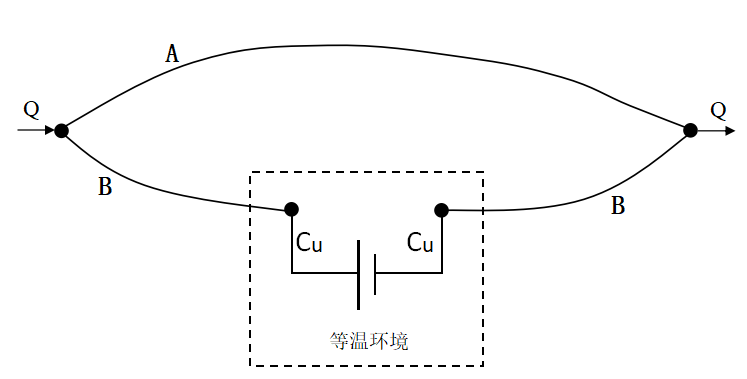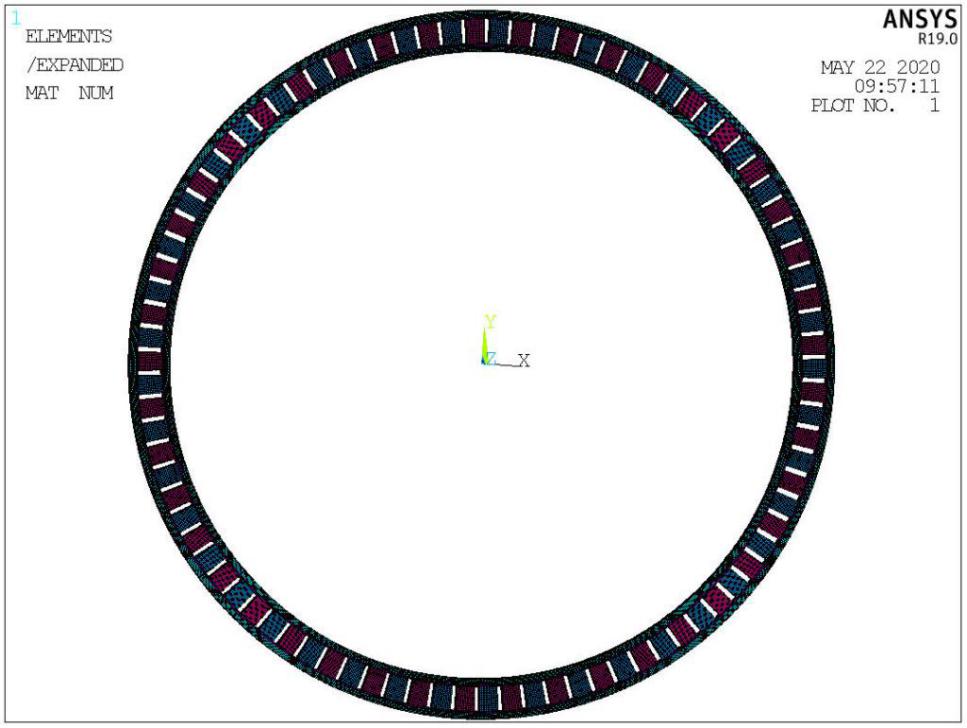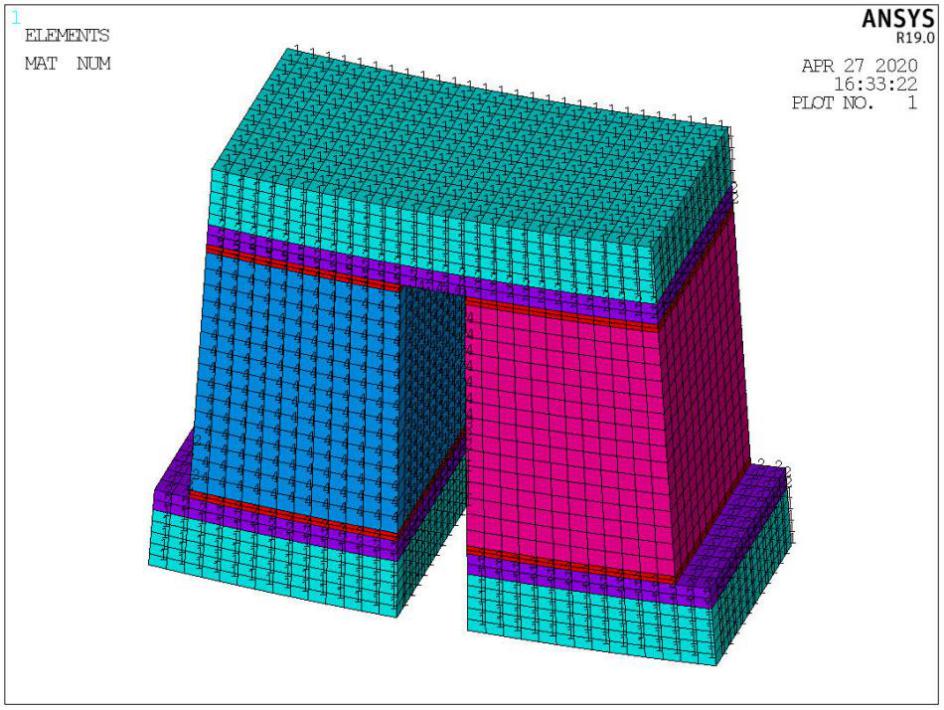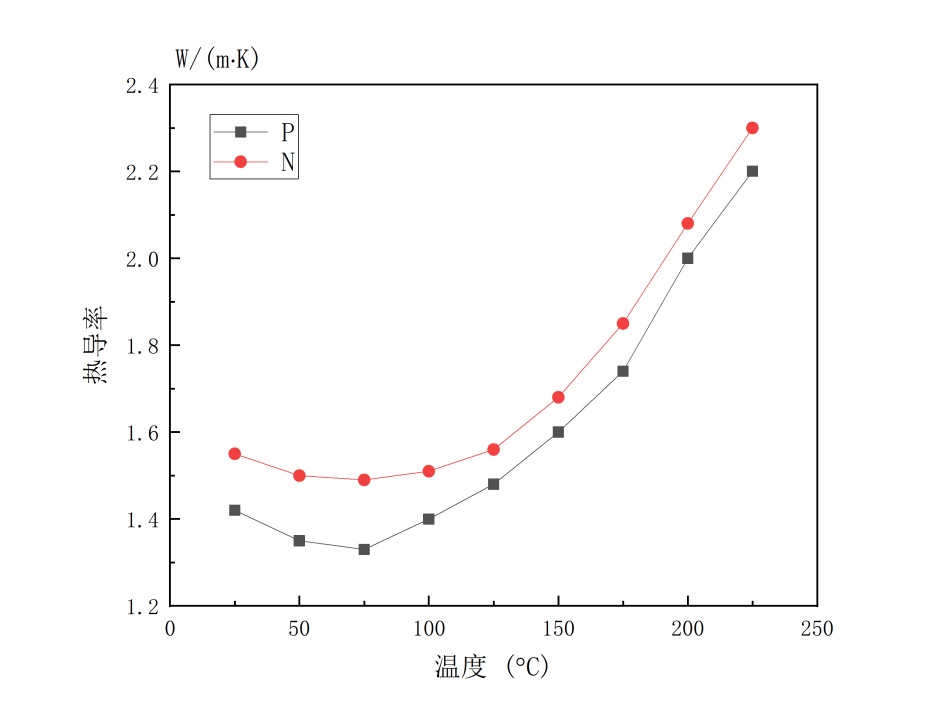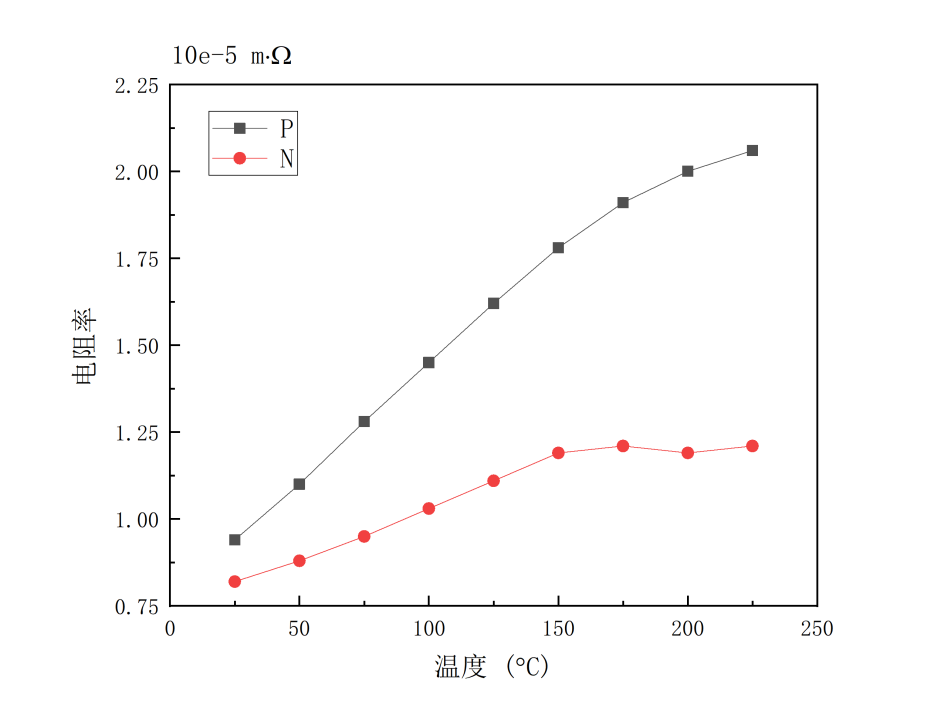环形热电器件热-力-电耦合性能的数值模拟研究毕业论文
2021-12-09 17:30:35
论文总字数:26023字
摘 要
热电器件可以利用碲化铋等半导体材料的塞贝克效应将热能直接转化为电能,因为工业废热排气筒等低品位热源多是管状,所以与之适配的环形热电器件具有非常好的应用前景。本文利用有限元分析软件ANSYS对环形热电器件的热-力-电耦合性能进行了数值模拟研究,建立了热电单偶的三维实体有限元模型,分析讨论了温度、热电偶腿长和圆心角对环形热电器件热电性能和力学性能的影响。主要研究内容与结论如下:
(1)环型热电器件的输出性能和热应力分析。计算获得了热电器件的电动势、最大输出功率和热电转换效率等输出性能,分别进行了热电器件线弹性和弹塑性应力分析,获得了器件各材料层热应力的分布规律。计算得到热电单偶的最大输出功率为0.051W,热电转换效率为4.90%;对比热电偶的线弹性模型,弹塑性模型的热应力结果有很大改善,铜电极、焊料层和热电材料的最大Von-Mises等效应力分别降为原来的45.65%、34.11%和69.94%。
(2)环形热电器件输出性能与热应力的影响因素分析。讨论了温度载荷和热电偶尺寸对热电器件输出性能的影响,获得了温度载荷和热电偶尺寸等因素与热电器件输出功率和热应力的关系曲线。环形热电偶电动势和转换效率随着腿长增大而增大,随圆心角的变化不明显;热端温度增大会增加热电偶两端温差,热电偶输出功率增大。腿长对热应力的影响较小,但是圆心角的增大会导致各材料层的热应力增大。本文的研究结果可为环形热电器件的优化设计提供参考。
关键词:环形热电器件;有限元分析;热电性能;热应力
Abstract
Thermoelectric devices can use the Seebeck effect of semiconductor materials such as bismuth telluride to directly convert thermal energy into electrical energy. Because industrial waste heat exhaust tubes and other low-grade heat sources are mostly tubular, the ring-shaped thermoelectric devices suitable for them have very good application prospects. In this paper, the thermo-mechanical-electric coupling performances of ring thermoelectric devices were numerically simulated through ANSYS program. A three-dimensional solid finite element model of the thermoelectric single couple was established, and the influence of temperature, thermocouple leg length and center angle on the thermoelectric performances and mechanical properties of ring thermoelectric devices was discussed. The main research contents and conclusions are as follows:
(1) The output performances and thermal stress of ring-shaped thermoelectric devices were analyzed. The electromotive force, maximum output, and thermoelectric conversion efficiency of the thermoelectric device were calculated. The linear elasticity and elastoplastic stress of the thermoelectric devices were analyzed, and the distribution rules of the thermal stress of each material layer of the device were obtained. The maximum output power of the thermocouple is calculated to be 0.051W, and the thermoelectric conversion efficiency is 4.90%. Compared with the linear elastic model of the thermocouple, the thermal stress results of the elastoplastic model are greatly improved, and the maximum Von-Mises equivalent stress of the copper electrode, solder layer and the thermoelectric material are reduced to 45.65%, 34.11% and 69.94%.
(2) The factors affecting the output performances and thermal stress of ring thermoelectric devices were analyzed. The influence of temperature load and thermocouple size on the output performances of thermoelectric devices was discussed. The relationship between the temperature load, the size of the thermocouple and the output power, thermal stress of thermoelectric devices was obtained. The electromotive force and conversion efficiency of the ring thermocouple increase with the increase of the leg length, but the response to the center angle is not obvious. The increase in the temperature of the hot end will increase the temperature difference between the two ends of the thermocouple and the output power of the thermocouple. The leg length has little effect on thermal stress, but increasing the central angle leads to increasing thermal stress in each material layer. The findings of this paper serve as a reference for optimal design of ring thermoelectric devices.
Key Words:Ring thermoelectric device; Finite element analysis; Thermoelectric performance; Thermal Stress
目录
第1章 绪论 1
1.1研究的背景和意义 1
1.2国内外研究现状 1
1.2.1平板型热电器件的研究 1
1.2.2分段式热电器件的研究 2
1.2.3环型热电器件的研究 3
1.3本文的主要研究内容 3
1.4技术方案 4
第2章 环型热电器件的组成和工作原理 5
2.1环型热电器件的组成 5
2.2热电效应 5
2.2.1傅里叶效应 6
2.2.2焦耳效应 6
2.2.3塞贝克效应 7
2.2.4帕尔贴效应 8
2.2.5汤姆逊效应 8
2.3输出功率的计算方法 9
2.3本章小结 9
第3章 环型热电偶热-力-电耦合性能的数值模拟 10
3.1环形热电偶的有限元模型 10
3.1.1热电偶的材料参数 11
3.1.2边界条件和载荷工况 14
3.2环型热电偶的输出性能 14
3.3环型热电偶的热应力分析 16
3.3.1线弹性模型的热应力分析 16
3.3.2弹塑性模型的热应力分析 17
3.4本章小结 19
第4章 环型热电偶输出性能的影响因素 20
4.1热电偶腿长对输出性能的影响 20
4.1.1腿长对电动势的影响 21
4.1.2腿长对最大输出功率的影响 21
4.1.3腿长对输出效率的影响 22
4.2热电偶圆心角对输出性能的影响 23
4.2.1圆心角对电动势的影响 24
4.2.2圆心角对最大输出功率的影响 24
4.2.3圆心角对输出效率的影响 26
4.3热电偶尺寸优化讨论 27
4.4本章小结 29
第5章 环形热电偶尺寸对热应力的影响 30
5.1热电偶腿长对热应力的影响 30
5.2热电偶圆心角对热应力的影响 34
5.3本章小结 35
第6章 结论 36
6.1结论 36
6.2展望 37
参考文献 38
致 谢 40
第1章 绪论
1.1研究的背景和意义
热电转换技术作为一种能源回收技术,可以利用半导体材料的热电效应将工业废热直接转化为电能,在倡导低碳生活的今天,利用其制造的热电器件可以提高能源利用率,减少污染,具有很高的应用价值[1, 2]。
但是在一些实际应用中,汽车尾气管、燃煤锅炉、利用太阳能的热管、热虹吸器等热源装置和散热器都是圆柱形表面或大弧度曲面,而目前针对热电转换技术的研究工作仍限制在平板型热电偶,在热交换器与热源或散热器之间的传热过程中,平板型热电偶和热源或散热器的几何形状不匹配,导致两者表面不贴合需要再填充一些传热介质,这会带来传热阻力问题,导致两者之间的传热效率较低,将大大降低热电发电器件的输出性能。因此,对可与管状热源或散热器紧密接触的环形热电偶的研究具有重要的意义。
1.2国内外研究现状
近年来,随着环境污染问题逐渐突出,人们对热电器件的发展前景有了全新的认识[3]。我国关于中高温热电技术的研发方面仍处于起步阶段,国内的热电器件制造技术起源于小型家电类行业,主要集中在热电制冷器件的开发[4]。热电器件作为一种能量回收利用工具清洁能源和可持续发展能源受到广泛关注,各国学者为了提高其输出性能和结构可靠性做了大量理论分析和模拟研究。
1.2.1平板型热电器件的研究
国内外学者对平板型热电器件做了很多研究,何志柱等通过建立一维自洽数值方法,在定义数值型等效热电参数的基础上,建立了一种新型的电热阻抗匹配(CETIM)模型,用于预测热电发电机(TEG)的最大输出功率和最高转换效率。CETIM模型可以突出热工条件和温度相关特性对TEG性能的影响。通过CETIM模型获得的输出功率和转换效率的解析表达式可用于推导单参数和两参数几何优化模型,无需复杂的优化方法即可快速,准确地求解。结果发现,与基于单参数模型的模型相比,两参数优化模型可以提高输出功率,例如,观察到的最大输出功率提高了27.8%,相应的转换效率提高了21.6%。他还详细研究了耦合的热电工作条件和几何尺寸对TEG性能的影响。结果表明,与通过降低热电发电机与热源之间的热阻相比,降低热电发电机与散热器之间的热阻可以获得更大的输出功率和转换效率[5]。
牟余等学者以车用多P-N结平板型热电器件为研究对象,分析了热端温度变化和冷端对流换热方式对热电器件输出功率和转换效率的影响,并基于车用热电发电机的服役工况,对平板型热电器件进行了模态分析,得到了其固有频率和振型;最后讨论了P-N结截面宽度和长度以及材料参数对热电偶输出性能和热应力的影响规律[6]。何杭等以两级热电发电机、两级热电制冷器的几何参数优化为例,对热电器件进行了优化设计,并对其中采用的优化方法做了说明[7]。
请支付后下载全文,论文总字数:26023字
相关图片展示:
